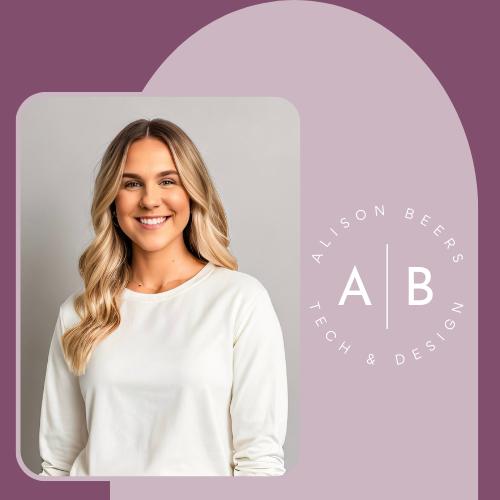AECT Standard 3
AECT Standard 3 (Learning Environments): Candidates facilitate learning by creating, using, evaluating, and managing effective learning environments.
Read below to explore my artifacts.


Artifact 1: “Fundamentals of Multi-Digit Addition”
Needs Assessment and Analysis
Context & Conditions
This needs assessment and analysis deliverable was a requirement of EDET 722 Instructional Design and Assessment, which was completed during my first semester of the M.Ed. Learning Design and Technologies program. This needs assessment and analysis are the first two sections of a much larger document which includes all planning documents for an e-learning module and a formative evaluation plan. The topic of this deliverable regards the fundamentals of multi digit addition and subtraction for k-2 students. The purpose of the needs assessment and analysis were to determine which skill gaps students were demonstrating within their classroom environment. The planning documents lead to the creation of an e-learning module which hones in on the skill gaps to assist teachers with supporting their students and planning their instruction.
The needs assessment is complete with the following sections: introduction, purpose, processes, results, and recommendations/actions. The process involved interviewing and surveying multiple teachers in various grade levels. The interview was conducted to create targeted survey questions to ensure proper information was collected. The survey consisted of 34 questions and included demographic information, Likert scales, rating scales and open-ended questions. The survey results were indicative of four main problem areas. Teachers indicated that students struggled the most with regrouping, place value, processes, and lack of prior knowledge. The recommendations and actions based on the data was that the instructional module should focus on the skills needed to achieve mastery in the areas of place value, regrouping, and processes of addition and subtraction.
The analysis is complete with the following sections: aim of instruction, goals, rank, learner analysis and contextual analysis. After six initial goals were identified, the goals were refined into three main goals. These goals are identify and reteach skills that students display difficulties with, increase students comprehension and application of math skills, and increase students ability to independently complete addition/subtraction, place value and regrouping problems. The learner analysis is comprised of the audiences, demographics, entry characteristics and prior knowledge. The contextual analysis is comprised of the orienting, instructional and transfer context.
This needs assessment and analysis were created using the Canva platform. The document was designed with a title page, a table of contents, appropriate headings, headers/footers, and page numbers.

Scope
The purpose of this needs assessment and analysis was to gain experience with independently assessing the needs of a situation, collecting data, analyzing the data, providing recommendations, and providing appropriate analysis and context for designing a module. This artifact was created using teacher data at the school I was working for with the purpose to improve student learning within my building. The needs assessment and analysis were the basis for the remainder of my instructional design documentation and set the content focus for my e-learning product.
Role
The needs assessment and analysis were completed as an individual project. I acted as the sole designer of the instructional design documentation as well as the sole developer for the end e-learning module. Throughout the creation of the needs assessment and analysis my professor, reviewed information, gave suggestions for edits and assisted with improvements of material.
Instructional Design
This artifact demonstrates the instructional problems, and learner characteristics elements of the Morrison, Ross and Kemp’s Model for Instructional Design (MRK). The identifying instructional problems section of MRK includes but is not limited to a needs assessment and a goal analysis (Morrison et al., 2019). The learner characteristics section of MRK includes a learner analysis (general and specific entry characteristics) and a contextual analysis (orienting, instructional and transfer context) (Morrison et al., 2019). The needs assessment and analysis conducted would take place during the analysis phase of the ADDIE Instructional Design Model (ADDIE). In this phase the instructional problem, instructional goals, and necessary learner information is clarified and identified (Instructionaldesign, 2018). In addition, information is collected to determine what students know versus what skills the students need to learn (Peterson, 2003).
Related Performance Indicator
AECT Standard 3 (Learning Environments): Candidates facilitate learning by creating, using, evaluating, and managing effective learning environments.
Indicators:
-Creating – Candidates create instructional design products based on learning principles and research-based best practices.
-Using – Candidates make professionally sound decisions in selecting appropriate processes and resources to provide optimal conditions for learning based on principles, theories, and effective practices.
-Assessing/Evaluating – Candidates use multiple assessment strategies to collect data for informing decisions to improve instructional practice, learner outcomes, and the learning environment.
-Managing – Candidates establish mechanisms for maintaining the technology infrastructure to improve learning and performance.
-Ethics – Candidates foster a learning environment in which ethics guide practice that promotes health, safety, best practice, and respect for copyright, Fair Use, and appropriate open access to resources.
-Diversity of Learners – Candidates foster a learning community that empowers learners with diverse backgrounds, characteristics, and abilities.
Reflection
During this project I learned how to plan and conduct a needs assessment and how to write a front-end analysis. This artifact was created during my first semester of the program, and it was my first experience with a needs assessment or analysis section of a design documentation report. When reviewing the artifact there are several aspects I find to still be appropriate along with some aspects I would do differently.
When reviewing the needs assessment and analysis I am pleasantly surprised with how thorough my write ups and details are. The report contains an appropriate amount of information as well as an appropriate selection of necessary information to guide the remainder of the design documentation. Based on the focus of the artifact, the data collection instruments and questions asked are also appropriate and properly targeted to ensure successful collection of information. The changes I would make regard the goals written in the front-end analysis. The end of product e-learning module being created is aimed to be a short 15–20-minute module. The goals written aim to accomplish an amount of content that the module is unable to produce. When creating the remainder of this design documentation, I re-wrote my goals to remove the subtraction piece of the foundations of multi-digit addition and subtraction. The module became The Fundamentals of Multi-Digit Addition. When beginning this project, I did not fully understand the need for concise and targeted goals and how the goals created would impact the remainder of the design documentation process. The goals written were written with proper intention based on the results of the needs assessment. If given the needed time, the final product could have been made into two separate modules, one focused on addition skills and one focused on subtraction skills.
Throughout the M.Ed. Learning Design and Technologies program, I have learned the importance of targeted, concise, purposeful, and achievable goals. This needs assessment and analysis artifact was a solid beginning but if created now would be changed to improve the flow of the design documentation in order to properly prepare for the development of the module.

Artifact 2: UDL and AT Accessible Website – Final Project

Context & Conditions
The building an accessible website assignment, UDL & AT was a requirement of EDET 735 Technological Applications for Diverse Populations, which was completed during my fifth semester of the M.Ed. Learning Design and Technologies program. The UDL & AT website was the final project for this course and displays other assignments such as a lesson plan, barriers to learning chart, and accessible PowerPoint presentation.
For the accessible website assignment, the goal was to create a website in compliance with web accessibility standards and to implement previous work into this website to ensure accessibility with various types of artifacts. The topic of my accessible website revolves around universal design for learning principles (UDL), how to implement UDL into everyday classroom instruction, as well as, assistive technology devices (AT)/programs and how to implement AT into instruction to support students with diverse needs.
The website contains five webpages: home, barriers to learning chart, accessible presentation, research, and multimedia resources. The home page contains the purpose of the website, descriptions of UDL, AT, diverse populations, and an intro to the lesson plan topic. The home page also provides an embedded accessible lesson plan document with descriptive links to access the lesson plan outside of the website. The barriers to learning chart page includes a purpose of the chart as well as a fully coded accessible table with appropriate headings, rows, columns, and a title. The accessible PowerPoint page includes the purpose of the presentation and provides an embedded accessible presentation as well as descriptive links to access the presentation outside of the website. The research page includes five articles and five weblinks for further information regarding UDL & AT. These articles and links are provided with descriptive links and full APA citations. The multimedia resources page includes two YouTube links to further explain UDL & AT.
The UDL & AT website was designed using the Google Sites platform. When creating the website, left-horizontal navigation was chosen to ensure menu navigation was accessible at all viewing times. Accessibility was ensured by providing alt-text for all images, providing descriptive links for all artifacts, and external resources, ensuring all headings, subheadings and paragraphs were appropriate and ensuring appropriate reading order of web pages. Prior to finalizing the website, the accessibility checker WAVE was utilized to ensure no issues were present or needed to be addressed. WAVE found no major accessibility concerns for the website.

Scope
The purpose of the building an accessible website artifact was to gain experience designing an accessible website, implementing accessibility principles when embedding documents/presentations into websites, practicing coding accessible tables, and practicing checking a website for accessibility issues and making adjustments based on the results. This artifact was the final project of the course and was a combination of all topics learned through the course.
Role
This website was completed as an individual project. I acted as the sole designer of website contents as well as the sole developer for the website product. Throughout the creation of this website, my knowledge of accessibility standards, website design/development, universal design for learning principles, and assistive technology devices/products were apparent and necessary.
Instructional Design
This artifact relates to the learner characteristics stage of Morrison, Ross, and Kemp’s Model for Instructional Design (MRK). The website created was designed with learners with disabilities needs as the focus. In order to properly design the website, learner characteristics and possible challenges for learners needed to be taken into consideration in order to ensure accessibility. When designing and planning it is necessary for the designer to consider the characteristics and abilities of the learners (Morrison et al., 2019). This artifact would fall under the analysis phase of the ADDIE Instructional Design Model (ADDIE). When conducting the analysis phase of ADDIE, the instructional designer must consider the target audience and determine the needs of the learners (Peterson, 2003).
Related Performance Indicator
AECT Standard 3 (Learning Environments): Candidates facilitate learning by creating, using, evaluating, and managing effective learning environments.
Indicators:
-Creating – Candidates create instructional design products based on learning principles and research-based best practices.
-Using – Candidates make professionally sound decisions in selecting appropriate processes and resources to provide optimal conditions for learning based on principles, theories, and effective practices.
-Assessing/Evaluating – Candidates use multiple assessment strategies to collect data for informing decisions to improve instructional practice, learner outcomes, and the learning environment.
-Managing – Candidates establish mechanisms for maintaining the technology infrastructure to improve learning and performance.
-Ethics – Candidates foster a learning environment in which ethics guide practice that promotes health, safety, best practice, and respect for copyright, Fair Use, and appropriate open access to resources.
-Diversity of Learners – Candidates foster a learning community that empowers learners with diverse backgrounds, characteristics, and abilities.
Reflection
During this project I learned the components of an accessible website, how to code an accessible table, how to check a website for accessibility concerns and how to create an accessible PowerPoint. Since this website was created well into my program, I was able to use previously learned skills in the area of coding, website development, and presentation creation. Due to this artifact being recently created, there are not many corrections I see that need to be made. However, there are a few things I wish I would’ve done differently.
Since this project was my first experience with developing a website for the sole purpose of being accessible, I had the goal of a minimal website with little content, images, pages etc. Not only was this goal due to ensuring accessibility, it was also due to screen readers experiencing less challenges when websites are built with a minimal style. However, now that I have had an initial experience, if I were to do this assignment again, I would challenge myself to add more content. The website itself is bare, uninviting, and not very engaging to viewers/learners. The home page could have been done differently with more of an intro to the website with additional resources and links to information within the website. The lesson plan located on the home page could have served as its own page with a deeper explanation of the purpose of the lesson plan within the website and examples of similar lesson plans. The barriers to learning chart page would have been more pleasing with added images, better spacing/layout of the table and a more cohesive font choice. The accessible PowerPoint page could be enhanced with an added video of a screencast of me narrating and explaining the purposes and necessity of each piece of the PowerPoint. My narration could have assisted individuals with disabilities as well by giving a deeper explanation. The research page could have been formatted to be more engaging by chunking the content into sections and adding categories/images for learners. Currently the research page reads as a list instead of a thoughtfully designed web page. The multimedia resources page needs explanations of the purpose for the resources and would benefit from a brief annotation of what the video contents are.
Throughout the M.Ed. Learning Design and Technologies program, I have learned how important thoughtful web design is especially when focused on web accessibility. The program has opened my eyes to the vast number of challenges individuals face when accessing information online. It has also taught me the weight small decisions hold when developing websites. This accessible website demonstrates application of knowledge and skills but could be improved to demonstrate expert level knowledge.